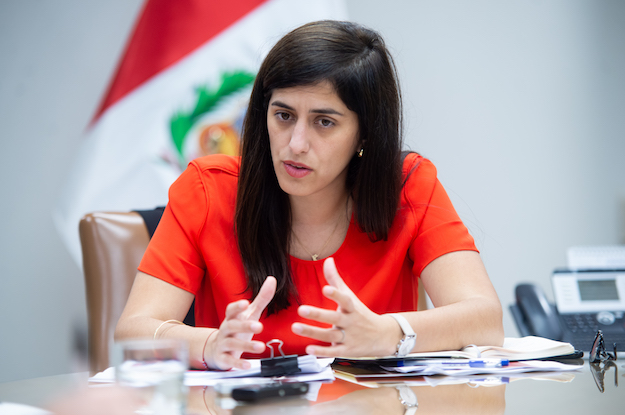This article is part of a continuing series on Latin America’s fiscal response to COVID-19.
BOGOTÁ – Projections are somber: An economic contraction not seen for at least a century, unemployment rising to 20% and poverty rates surpassing 30%, reversing decades of economic and social progress. The scenario for Colombia – and Latin America – is probably the most challenging our generation has faced. But there are ways to mitigate these effects through fiscal policy and long overdue economic reforms.
The expansion of COVID-19 has negatively affected lives and livelihoods. But it has done so in an unequal way, hurting the poor and those more likely to return to poverty the most. This is especially true for Latin America and its high informality rates. A large proportion of the population lives with little work protection, earning their income in hand-to-mouth activities that are acutely affected by lockdown measures.
Colombia moved swiftly on the public health and the economic sides. A national lockdown was imposed on March 25, a few days after the government declared a state of emergency and created an emergency fund equal to 2.8% of the country’s gross domestic product (GDP). The fund is meant to finance health and other emergency-related expenditures, provide up to 90% of government guarantees to credit for SMEs, and increase transfers to poor families and vulnerable households.
To assemble the emergency fund, the government combined resources from an oil and mining royalties fund created in 2012 with reserves amounting to 1.5% of GDP, domestic bond issuances and other sources for an additional 1.3% of GDP.
Despite these efforts, our estimates show that the Colombian economy could contract this year somewhere between 2.7% and 7.9%, with a middle scenario of a 5% decrease in GDP. Unemployment, which last year stood at 10.5%, could rise to 20%. Poverty levels could go up from 27% to 34% of the population, reversing almost ten years of progress on this front. In line with our forecast, the government’s most recent estimate is a contraction of 5.5% this year, which would be Colombia’s biggest in at least a century.
The country’s speed of recovery will largely depend on both the depth and effectiveness of the countercyclical measures taken, so today, fiscal considerations must take a back seat.
Responses in the region
To mitigate the negative impact of lockdowns across the region, governments have moved swiftly to expand transfers to households through sophisticated safety nets built over the past two decades. To prevent temporary liquidity problems from turning into bankruptcies, authorities have devised instruments like government-guaranteed credit lines and direct subsidies to keep firms afloat. This is key. History shows that the unnecessary break-up of productive firm-worker matches imposes a negative toll on growth and takes an unduly long time to recover.
But the size of the fiscal responses has varied markedly across countries. According to the IMF, whereas Argentina and Colombia have set up support packages in the order of 3% of GDP, Chile has done so in 4.7% of GDP, while Brazil and Peru are closer to 7% of GDP. The average number in these five countries is 4.8% of GDP, which is dwarfed by the size of the response planned by the U.S. (at least 12% of GDP).
What prevents Latin American countries from increasing their fiscal support? One answer is lack of financing. The current crisis induces “flight to quality,” that is, a sudden change in investors’ appetite for risk, where they shift their portfolios from riskier to safer assets, typically government bonds from advanced economies. Another is lack of fiscal space. Although some countries were better positioned to withstand the current shock due to their low debt levels and good credit ratings, say Peru as opposed to Argentina, most countries are fearful of a large deterioration of their public balances due to the associated risks of credit downgrades and capital outflows, which would further amplify the economic shock.
Such fear is misguided. The current situation is truly extraordinary: It is an extremely large, unexpected and temporary shock, which public finance theory shows should be financed by issuing debt. Fast and comprehensive measures to sustain economic activity and employment will lead to a quicker recovery and faster growth, and also implies better prospects for debt sustainability. Countries should then use every possible fiscal space to prevent an economic catastrophe that could erase all the economic and social gains for the region during this century.
Reforms needed
The crisis has brought to the forefront many longstanding structural problems in the region. Large informal sectors hurt productivity and make it difficult for governments to properly target loans and subsidies in bad times – and collect taxes in the good. Small tax collection implies weak state capacity to provide quality public goods and social transfers for those most in need. This capacity will only weaken due to the fall in tax revenues as economic activity contracts.
But the crisis will open a window of opportunity, where hard-to-find political consensus will allow for the implementation of otherwise difficult and unpopular reforms.
One such reform should squarely aim at reducing the region’s high informality rates, which hover around an average of 50% of the total labor force. Successful recent experiences show that reducing non-wage formal labor costs is key. Colombia was able to reduce its informality rate permanently by about 3 percentage points through a labor market reform in 2012 that reduced the cost of hiring someone formally. The relative price of formal versus informal jobs matters, so further progress in this front is critical for Latin America.
Another reform is broadening the tax base, by substantially increasing the fraction of the population that must file a tax return. The region typically collects less than 2% of GDP on personal income taxes, with a structure heavily biased towards corporate income taxes, whereas OECD economies collect 8.3% on average. Countries should expand tax bases without changing tax rates at first, but as growth recovers such taxes could be an important source of revenue. Colombia currently collects 1.2% of GDP from personal income taxes, with the lowest rate starting at twice per capita income, well above OECD standards (around half of per capita income). This should be fixed.
The region should also carefully examine tax exemptions, both on indirect and corporate income taxes. Value-added tax exemptions are regressive, as low-income households mainly buy goods in informal markets, so the benefits of these exemptions accrue mainly to middle- and high-income families. This increases the inequality of the tax system. Many countries also have complicated tax codes, with a myriad of corporate sectoral exemptions that diminish tax revenues. These exemptions are hard to eliminate in normal times, but should now be carefully considered and hopefully eliminated.
Reforms for increasing saving rates are also essential. With few exceptions, capital markets in Latin America are shallow or almost non-existent, and financial deepening, measured as credit to the private sector as a fraction of GDP, is small. Reforms to correct these issues will increase saving rates and lower the cost of capital, thereby increasing investment and economic growth. Colombia could do well to implement the recommendations of a recent task force that analyzed the challenges of its domestic capital market, the smallest among Pacific Alliance countries.
Instead of another “lost decade,” Latin America should aim for quick countercyclical responses for a swift economic recovery, followed by a short period of economic reforms that put the region back on the track of prosperity. The opportunity is here. Let us not miss it.
—
Mejía is the executive director of Fedesarrollo. He was deputy minister and minister of planning of Colombia from 2014-2018, leading the ministry in its implementation of the Sustainable Development Goals agenda. Mejía was director for macroeconomic policy at Colombia’s ministry of finance, as well as researcher at Colombia’s bentral bank and the Inter-American Development Bank. Follow him on Twitter @LuisFerMejia.








